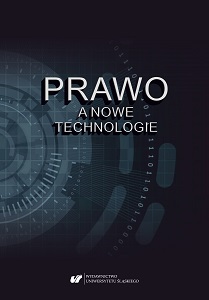Lotnictwo, technologia i prawo w służbie bezpieczeństwu
Aviation, technology, and law in the service of security
Author(s): Aleksandra Wieczorek
Subject(s): Law, Constitution, Jurisprudence
Published by: Wydawnictwo Uniwersytetu Śląskiego
Keywords: aviation law; technologies; aviation safety;certification;
Summary/Abstract: In this day and age, the ubiquitous technology and computerization surprises no one. More and more people entrust their lives and safety to machines, or particularly – to software of various devices. Aviation is a perfect example of a field dominated by technology. Modern planes F-16 or F-117 are unable to fly without computers operating on board.Aircraft software usually consists of several million lines of code. In a word – deciding to travel by plane, we entrust life to a sequence of zeros and ones. Aviation law is one of the youngest departments of transport law. New solutions in aviation are being implemented in record time. The best proof is the ongoing work on the another plane like Concorde.Concorde or the Boom XB-1 technology can propel passenger planes to exceed the sound barrier. The implementation of new solutions for general use is not only a matter of developing them, but also a certification procedure, preceded by numerous research, tests, and permits. An example of such changes are ubiquitous autopilots or the use of artificial horizon. There are a number of recognized laws regarding the admission of machines for use, and the relevant authorities and international organizations have additional control. Law – by its definition – should be stable and rarely changed. How does it react to the rapid development of aviation technologies?Virtually nothing guarantees the elimination of the risk of a catastrophe, however, autopilot or other types of software are almost never the only causes of accidents. From a technical point of view, the responsibility for every plane crash ultimately falls on human. During passenger flights it is still impossible to control the machine through the system without human intervention. Perhaps a total automation of the air transport would be a better and more reliable solution for our security. The machine undergoes no emotional disturbances, it does not get tired, it is not careless, it does not make decisions intuitively, but based on calculations of the probability, and applies a solution that is mathematically more favourable. Many air disasters would be avoided if ordinary human weaknesses were eliminated.
Book: Prawo a nowe technologie
- Page Range: 108-116
- Page Count: 9
- Publication Year: 2019
- Language: Polish
- Content File-PDF

